Abstract
OBJECTIVES: The purpose of this study was to expand the search for risk factors for low birthweight and to find new explanations for the ethnic-group disparities in birth outcomes. METHODS: The subjects were 1150 pregnant women from six ethnic groups (African American, Chinese, Dominican, Puerto Rican, Mexican, and White) who received prenatal care at clinics in New York and Chicago between December 1987 and December 1989. Two interviews were conducted during the second and third trimesters of pregnancy. RESULTS: The study, after controlling for poverty and other birthweight correlates, showed that living in public housing and believing that chance plays a major role in determining one's health status were negatively associated with birthweight. Having a stable residence was positively related to birthweight. Material hardship, social adversity, perceived racial discrimination, physical abuse, anxiety, and depression were not associated with birthweight. CONCLUSIONS: The negative role of an impoverished living environment and feelings of helplessness, as well as the positive role of having a stable form of social support, suggest new directions for research on the causes of low birthweight and the ethnic disparities in US birth outcomes.
Full text
PDF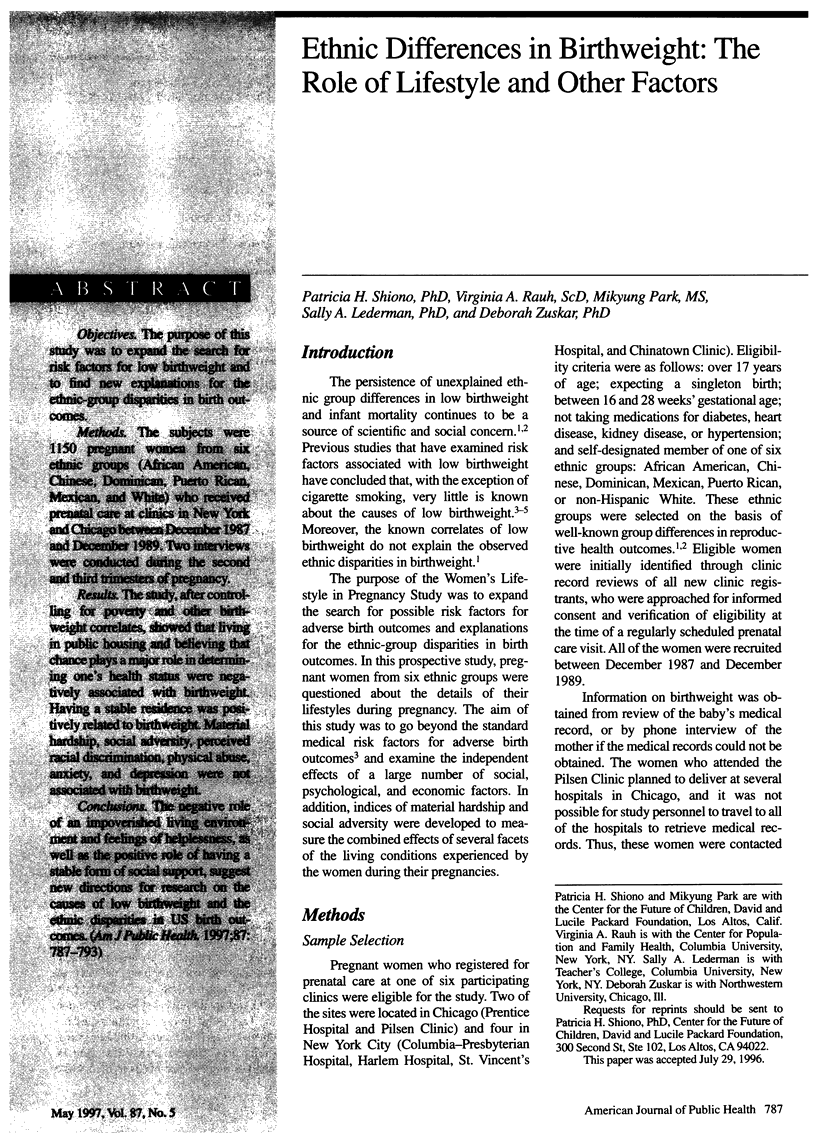
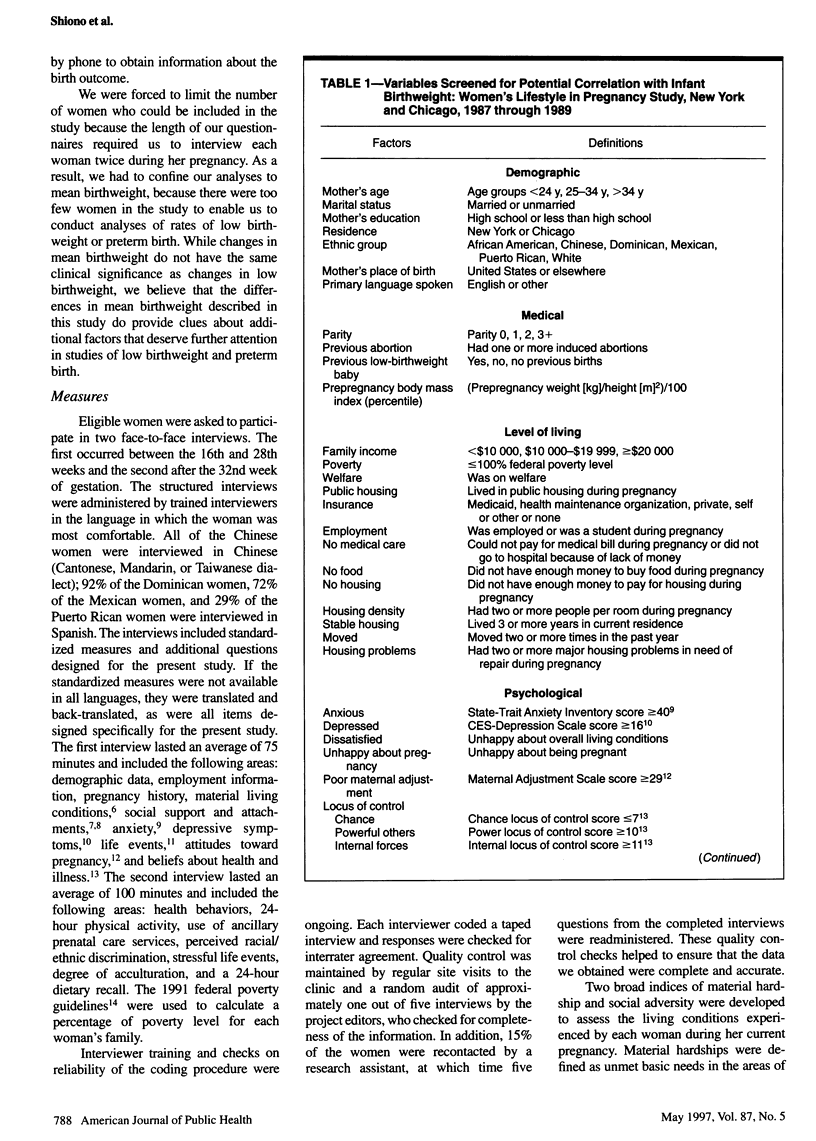
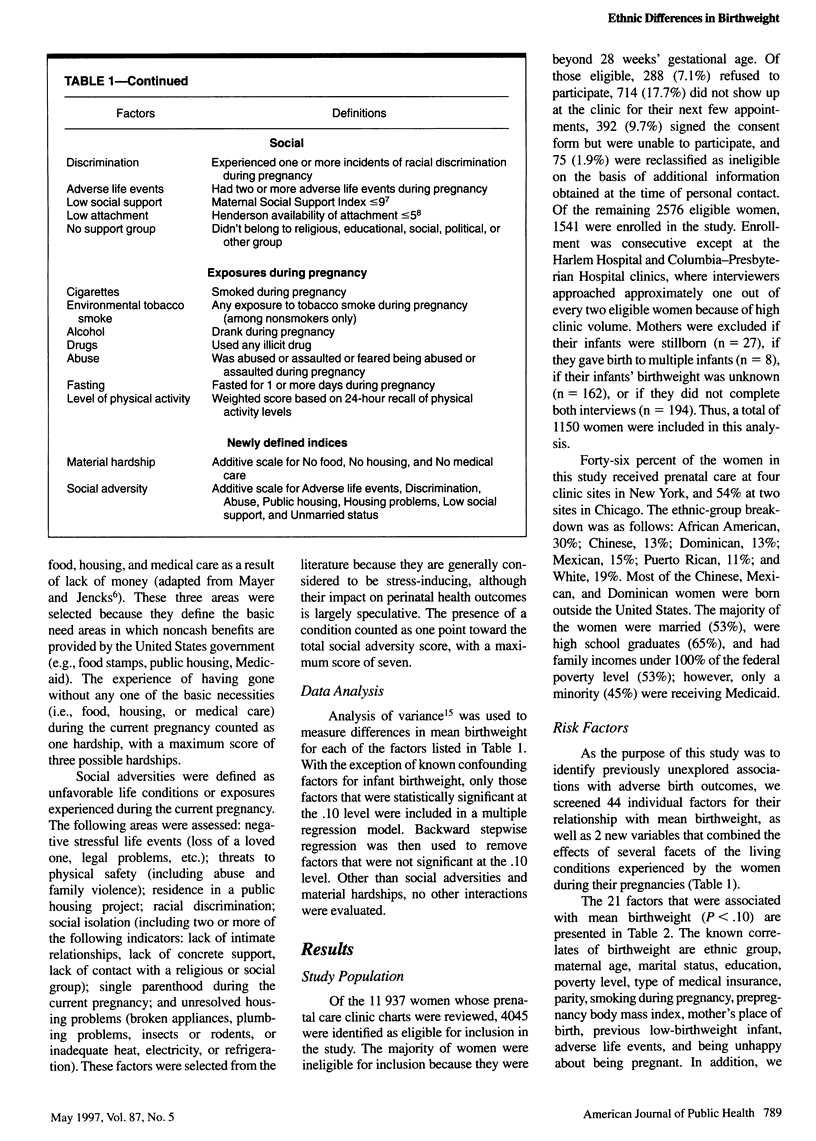
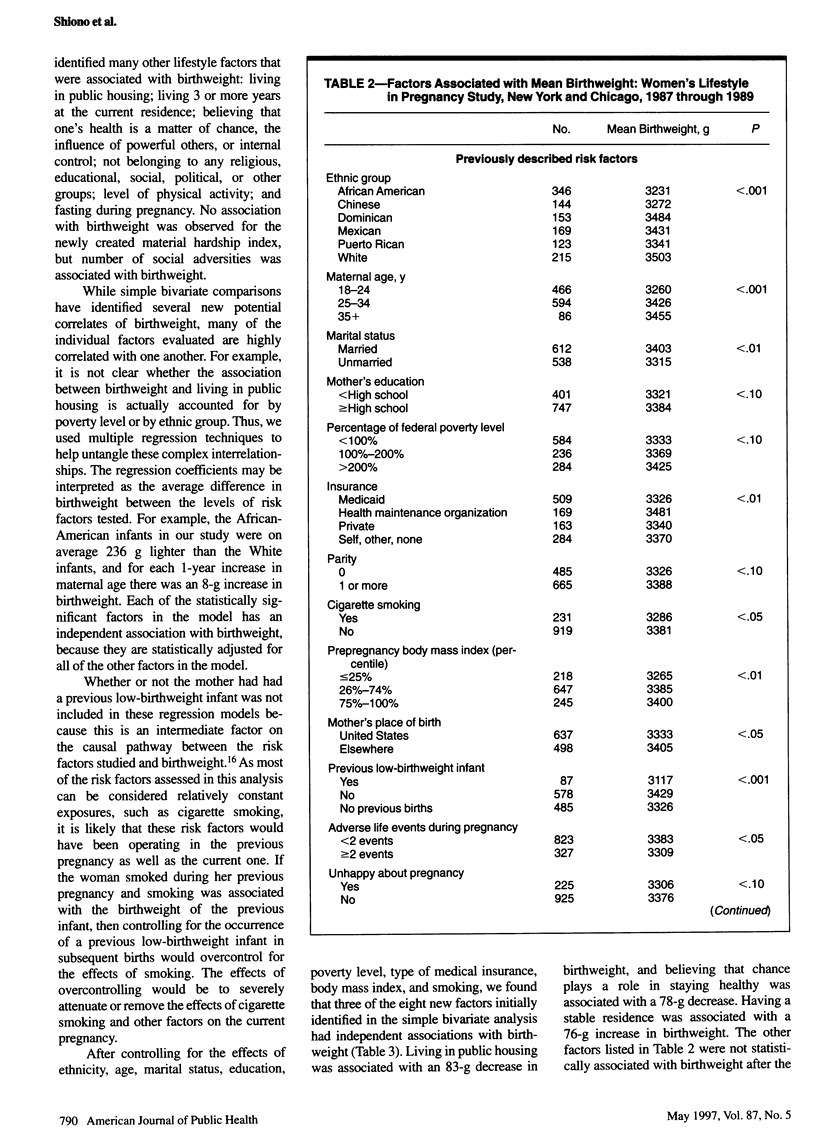
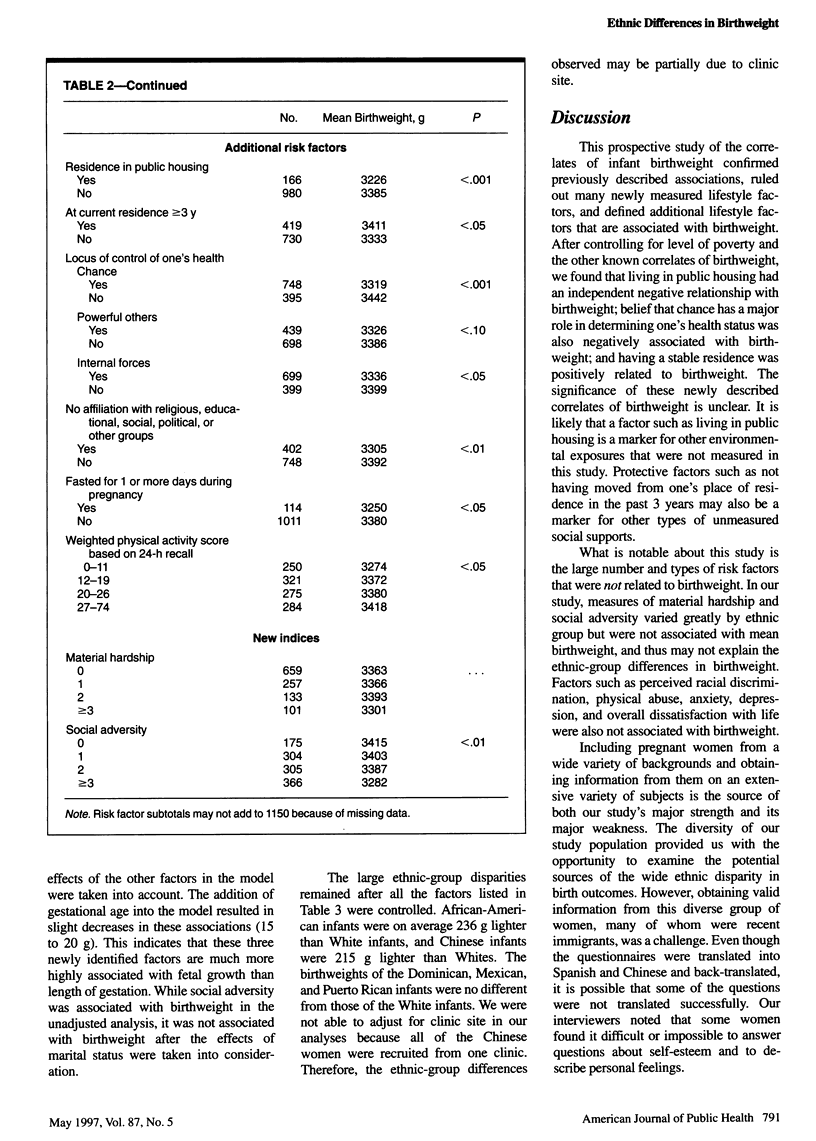
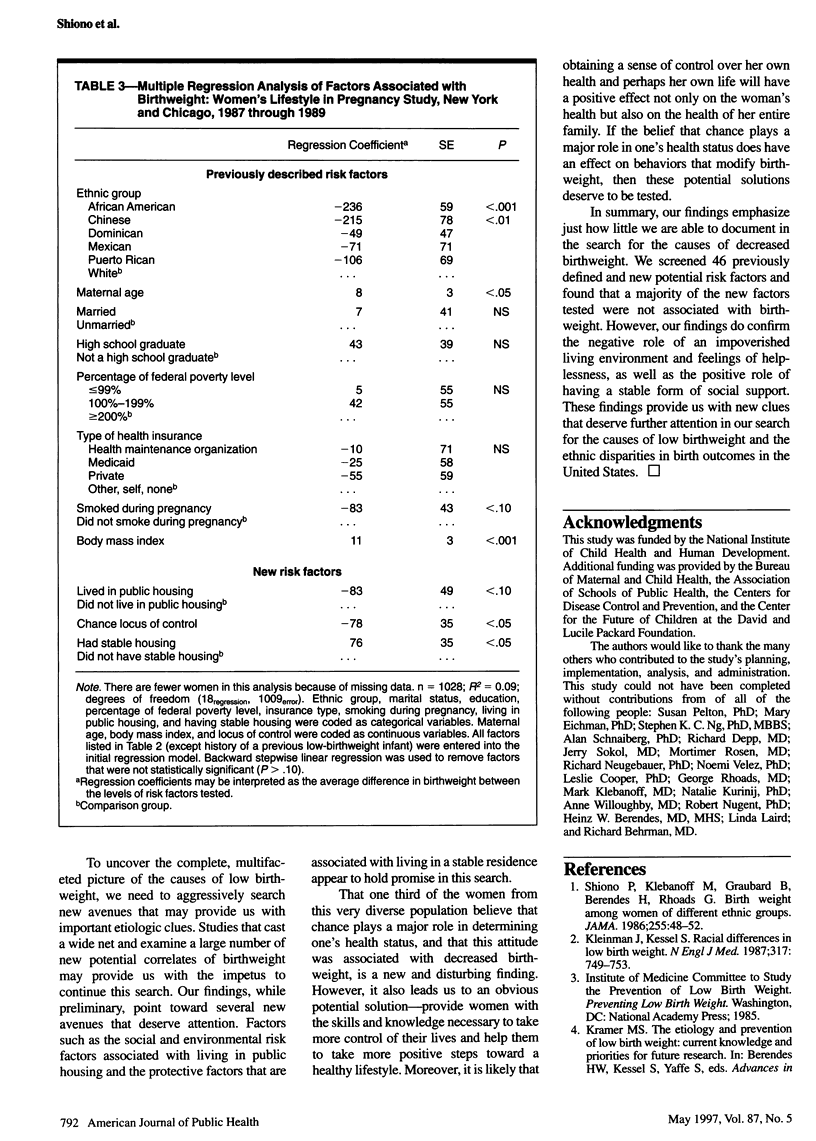
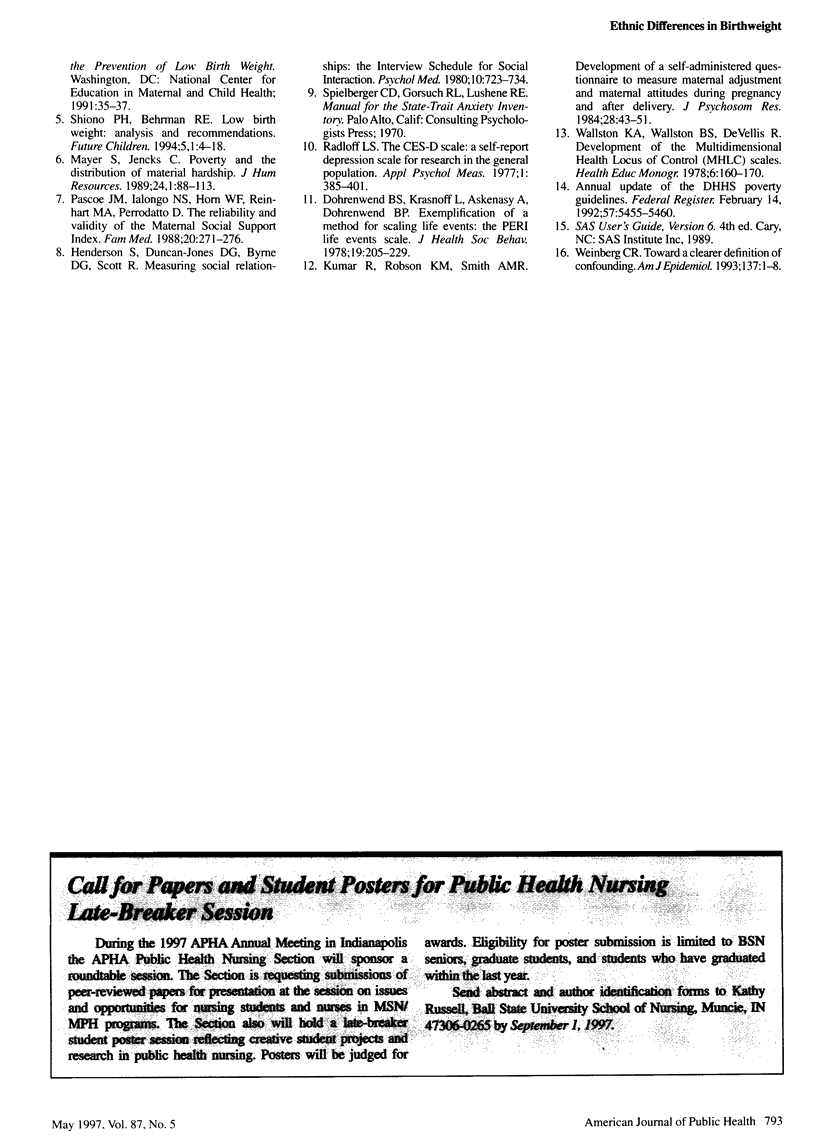
Selected References
These references are in PubMed. This may not be the complete list of references from this article.
- Dohrenwend B. S., Krasnoff L., Askenasy A. R., Dohrenwend B. P. Exemplification of a method for scaling life events: the Peri Life Events Scale. J Health Soc Behav. 1978 Jun;19(2):205–229. [PubMed] [Google Scholar]
- Henderson S., Duncan-Jones P., Byrne D. G., Scott R. Measuring social relationships. The Interview Schedule for Social Interaction. Psychol Med. 1980 Nov;10(4):723–734. doi: 10.1017/s003329170005501x. [DOI] [PubMed] [Google Scholar]
- Kleinman J. C., Kessel S. S. Racial differences in low birth weight. Trends and risk factors. N Engl J Med. 1987 Sep 17;317(12):749–753. doi: 10.1056/NEJM198709173171207. [DOI] [PubMed] [Google Scholar]
- Kumar R., Robson K. M., Smith A. M. Development of a self-administered questionnaire to measure maternal adjustment and maternal attitudes during pregnancy and after delivery. J Psychosom Res. 1984;28(1):43–51. doi: 10.1016/0022-3999(84)90039-4. [DOI] [PubMed] [Google Scholar]
- Pascoe J. M., Ialongo N. S., Horn W. F., Reinhart M. A., Perradatto D. The reliability and validity of the maternal social support index. Fam Med. 1988 Jul-Aug;20(4):271–276. [PubMed] [Google Scholar]
- Shiono P. H., Behrman R. E. Low birth weight: analysis and recommendations. Future Child. 1995 Spring;5(1):4–18. [PubMed] [Google Scholar]
- Shiono P. H., Klebanoff M. A., Graubard B. I., Berendes H. W., Rhoads G. G. Birth weight among women of different ethnic groups. JAMA. 1986 Jan 3;255(1):48–52. [PubMed] [Google Scholar]
- Wallston K. A., Wallston B. S., DeVellis R. Development of the Multidimensional Health Locus of Control (MHLC) Scales. Health Educ Monogr. 1978 Spring;6(2):160–170. doi: 10.1177/109019817800600107. [DOI] [PubMed] [Google Scholar]
- Weinberg C. R. Toward a clearer definition of confounding. Am J Epidemiol. 1993 Jan 1;137(1):1–8. doi: 10.1093/oxfordjournals.aje.a116591. [DOI] [PubMed] [Google Scholar]


